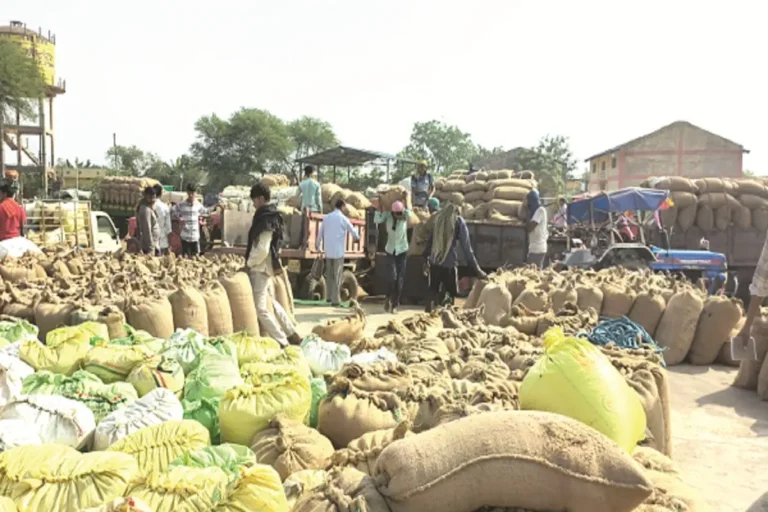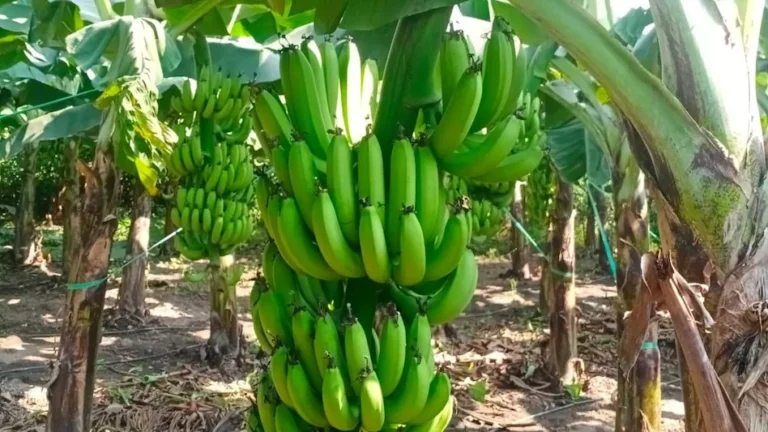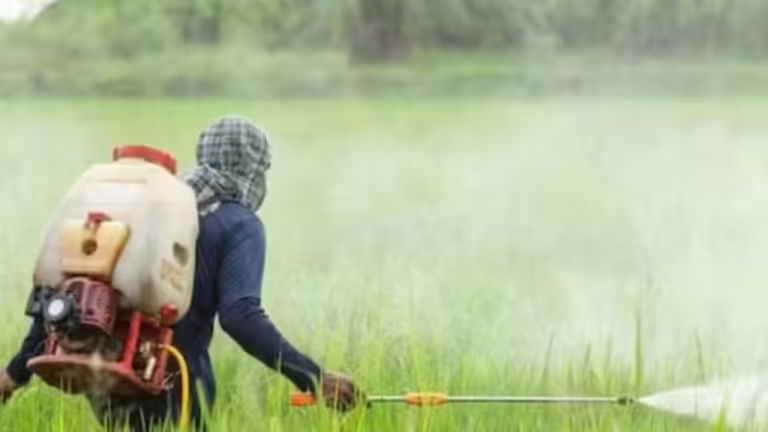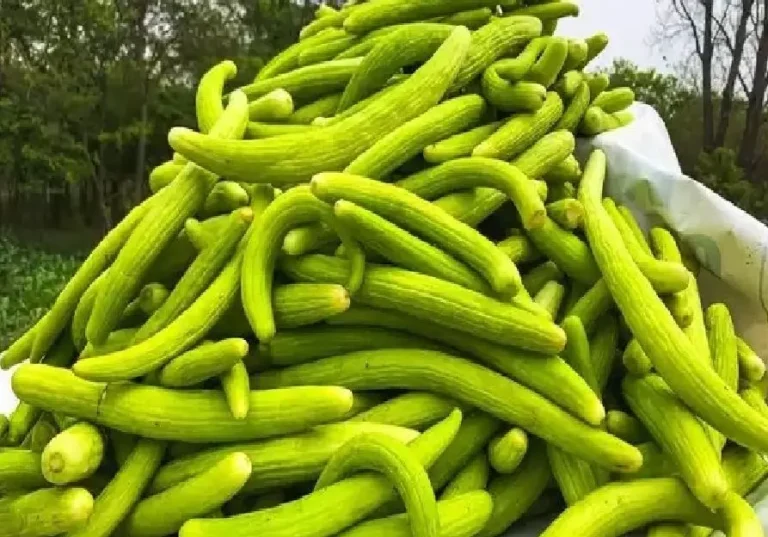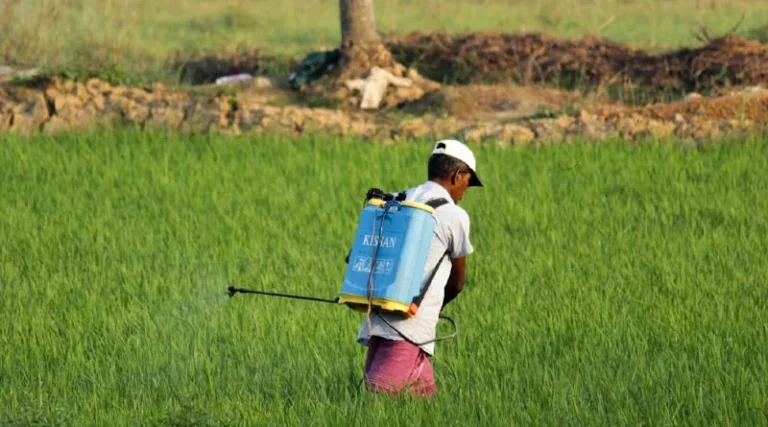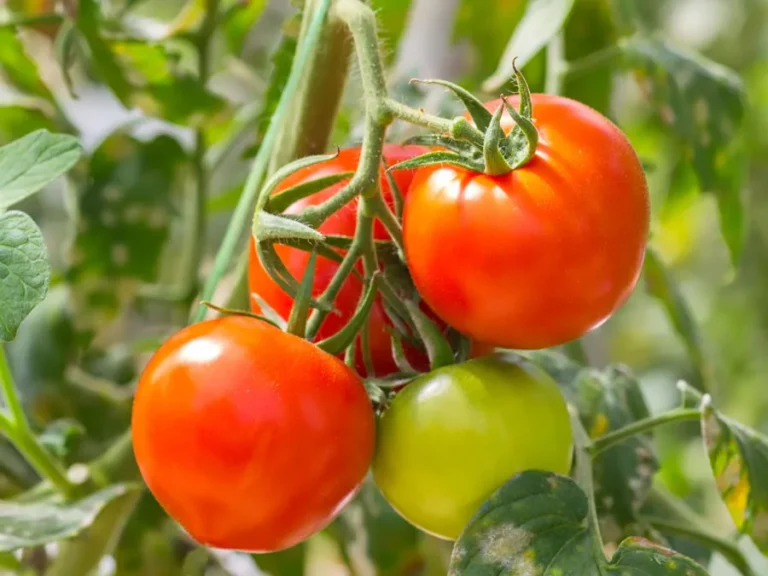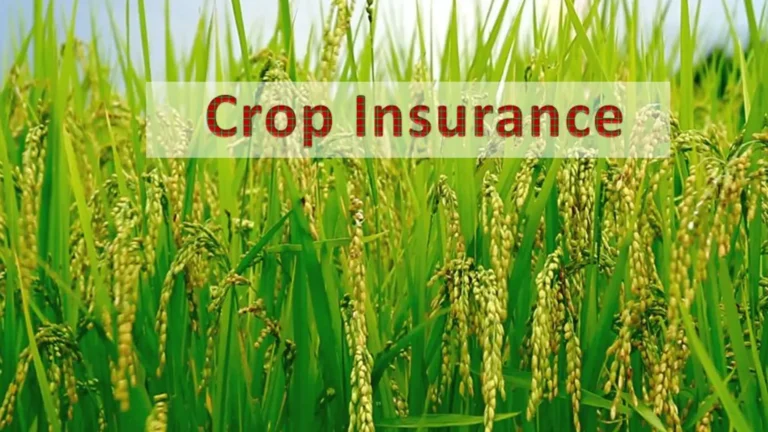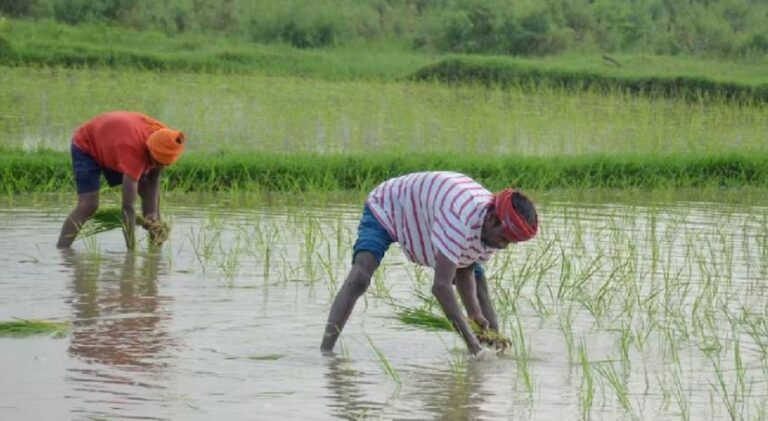Any country needs agriculture since it is the cultivation of crops, vegetables, fruits, and flowers. A nation’s economy mainly depends on agriculture, which depends on geography, product demand, labor, and technology. Through this blog, we shall discuss the different types of farming that India is engaged in, the practices followed, the merits, and the contribution to the economy. Whether you are a seasoned farmer or just interested in agriculture, this is one guide that will walk you through different farming practices in India.
Top 10 Types Of Farming In India
There are many types of farming, but we are here describing 10 types of farming / types of agriculture, and they are as follows:-
1. Subsistence Farming
Subsistence farming, also called family farming, is where farmers grow crops mainly to feed their families. Unlike commercial agriculture, it uses simple, labour-intensive methods and low technology. Farmers use traditional tools and often work on small plots of land, usually less than 5 acres. This type of farming includes mixed crops and low yields.
India hosts more than 80% of smallholder farmers; hence, the country stands as one of the highest contributors to subsistence agriculture. This practice should serve to minimize poverty and food crises in areas of low income. Their most significant emphasis is put on sustainable methods such as crop rotation, which improves soil health and diverse crops for family nutrition. To most of them, agriculture is a culture itself, as it is defined by the maintenance of traditions and efforts to ensure food security. This type of agriculture can be sub-classified into four and you can read about them here:
4 Types Of Subsistence Farming
1. Intensive and Extensive Subsistence farming
Intensive subsistence farming uses small plots of land where farmers work very hard to grow as much food as possible. They use simple tools and a lot of labour. The warm, sunny climate and good soil allow them to produce more than one crop each year. Rice, wheat, maize, pulses, and oilseeds are the main crops grown. This type of farming is commonly practised in South, Southeast, and East Asia.
Extensive subsistence farming is another type of farming that uses larger areas of land with less labour and lower yields. This method needs more land but less work. Both types of farming help farmers feed their families, with intensive farming focusing on getting a lot from small areas and extensive farming using more land with less effort.
2. Primitive subsistence farming
Primitive subsistence farming is the oldest types of farming. Farmers use simple tools like sticks and hoes and rely on natural rainfall. They grow just enough food to feed their families. This type of farming often involves shifting cultivation, where farmers clear a small patch of land, grow crops for a few years, and then move to a new area when the soil loses its fertility.
Crops commonly grown include yams, cassava, and maize. This method is found in remote areas of Africa, Asia, and South America. It’s a basic, traditional way of farming that has been used for generations. It is one of the best types of farming in India that any farmer can consider.
3. Shifting cultivation
- Shifting cultivation is the 3rd that comes under the list of types of farming in India. This type of cultivation spread in thickly forested areas like amazon basin, tropical Africa, Southeast Asia, and northeast India. These are the areas of heavy rainfall.
- It is a quick regeneration of vegetation.
- The process of shifting cultivation is that first of all the land is cleared by falling trees and burning them. Then the ash of the trees is mixed with the land soil.
- This type of cultivation farming is grown on crops like maize, yam, potatoes, and cassava. Crops are grown in this land for 2 or 3 years. Then the land left out because fertilizer of the soil decreases.
- The farmers move to the other land to repeat this process of farming. This is also called ‘slash and burn agriculture’.
Shifting cultivation is different types of cultivation known in the different parts of the world –
1. Jhumming North East India
2. Milpa Mexico
3. Roca brazil
4. Ladang Malaysia
4. Nomadic Herding
These types of farming are done in semi-dry and dry areas, such as Central Asia and parts of India, including Rajasthan, Jammu and Kashmir. The nomadic herding process involves herdsmen moving from one place to another along defined routes for grazing and water.
They move their animals, such as sheep, camels, yaks, and goats, to different locations for feed and water. The products of this farming are milk, meat, and other items that support the herdsmen and their families. This method effectively utilizes sparse resources in dry regions.
2. Commercial Farming1. Intensive and Extensive Subsistence farming
Intensive subsistence farming uses small plots of land where farmers work very hard to grow as much food as possible. They use simple tools and a lot of labour. The warm, sunny climate and good soil allow them to produce more than one crop each year. Rice, wheat, maize, pulses, and oilseeds are the main crops grown. This type of farming is commonly practised in South, Southeast, and East Asia.
Extensive subsistence farming is another type of farming that uses larger areas of land with less labour and lower yields. This method needs more land but less work. Both types of farming help farmers feed their families, with intensive farming focusing on getting a lot from small areas and extensive farming using more land with less effort.
2. Primitive subsistence farming
Primitive subsistence farming is the oldest types of farming. Farmers use simple tools like sticks and hoes and rely on natural rainfall. They grow just enough food to feed their families. This type of farming often involves shifting cultivation, where farmers clear a small patch of land, grow crops for a few years, and then move to a new area when the soil loses its fertility.
Crops commonly grown include yams, cassava, and maize. This method is found in remote areas of Africa, Asia, and South America. It’s a basic, traditional way of farming that has been used for generations. It is one of the best types of farming in India that any farmer can consider.
3. Shifting cultivation
Shifting cultivation is the 3rd that comes under the list of types of farming in India. This type of cultivation spread in thickly forested areas like amazon basin, tropical Africa, Southeast Asia, and northeast India. These are the areas of heavy rainfall.
So lets take small break, do you know about diu win platform ? If no i recommend you to check this platform. Its helpful guys check now.
It is a quick regeneration of vegetation.
The process of shifting cultivation is that first of all the land is cleared by falling trees and burning them. Then the ash of the trees is mixed with the land soil.
This type of cultivation farming is grown on crops like maize, yam, potatoes, and cassava. Crops are grown in this land for 2 or 3 years. Then the land left out because fertilizer of the soil decreases.
The farmers move to the other land to repeat this process of farming. This is also called ‘slash and burn agriculture’.
Shifting cultivation is different types of cultivation known in the different parts of the world –
1. Jhumming North East India
2. Milpa Mexico
3. Roca brazil
4. Ladang Malaysia
4. Nomadic Herding
These types of farming are done in semi-dry and dry areas, such as Central Asia and parts of India, including Rajasthan, Jammu and Kashmir. The nomadic herding process involves herdsmen moving from one place to another along defined routes for grazing and water.
They move their animals, such as sheep, camels, yaks, and goats, to different locations for feed and water. The products of this farming are milk, meat, and other items that support the herdsmen and their families. This method effectively utilizes sparse resources in dry regions.
2. Commercial Farming
In this type of cultivation, crops are growing for sale in the market. The main purpose of this farming is to do business. It required large areas and a high level of technology. It’s done with the high cost of tools.
There are 3 Types of Commercial Farming Given Below
1. Commercial mixed farming in India
Mixed farming combines crop cultivation and livestock rearing on the same farm. Farmers grow crops like wheat, barley, and maize while also raising animals such as cattle, pigs, and chickens.
These types of farming diversify income sources and efficiently use land and resources. Commercial mixed crops are done almost at the same duration. This farming is mostly used in Europe, the eastern USA, Argentina, southeast Australia, New Zealand and South Africa.
2. Commercial Dairy farming
Dairy farming focuses on producing milk and other dairy products. Farmers keep and manage dairy cows, ensuring they have proper care and feed. They also need facilities to process and store the milk.
This type of farming is common in areas with good climates and easy access to markets where fresh dairy products can be sold. It provides a steady income and meets the demand for milk, cheese, butter, and yoghurt.
3. Commercial plantation farming
This type of farming in India requires a lot of labour and extensive land. It focuses on crops like tea, coffee, cotton, rubber, bananas, and sugarcane. The products are often processed on the farm or in nearby factories.
These products do not go directly to sale; after harvesting, they are processed, such as roasting the leaves in factories or on farms. These are all tree crops. This farming also requires significant transportation because the products need to be moved from one area to another for further processing or sale.
Areas of plantation farming in tropical regions of the world –
1. Like rubber in Malaysia.
2. Tea in India.
3. Coffee in Brazil.
This farming mostly done in hilly areas like sub-Himalayan, Nilgiri and west Bengal.
Commercial plantation farming takes a long period to mature the products but these produced for long periods.
3. Terrace Farming
Terrace farming is a method of growing crops on the sides of hills or mountains by creating flat areas, or “terraces,” on the slopes. These terraces help prevent soil erosion and water runoff, making it easier to grow crops in hilly regions.
Each terrace acts like a small field, allowing farmers to plant and harvest crops more efficiently. By using terrace farming, farmers can make use of otherwise unusable land, conserve water, and reduce the loss of fertile soil, leading to better yields and more sustainable farming practices in mountainous areas.
This type of farming is commonly practised in countries like China, India, Indonesia, the Philippines, Nepal, Peru, Bolivia, Guatemala, Mexico, Ethiopia, Kenya, Spain, Italy, and Greece.
4. Dry Land Farming
Dry Land Farming also connected to arid conditions, areas that are drought-prone and have a scarcity of water resources. It requires specific farming techniques to cultivate non-irrigated crops. This type of farming also known as dry farming in many areas. In short, dryland farming is growing crops totally through rainfall and soil moisture. Artificial means not used in this method of agriculture. It is one of the most popular types of farming in India among the farmers.
The following are some important aspects of Dryland Farming:
Dry Land Farming is cost-effective as its crops are wholly dependent on soil moisture and rainfall.
It is a sustainable method to do farming; hence, it is good for the environment.
This farming method also prevents soil erosion and helps conserve water resources.
5. Wetland Farming
Wetland farming takes place in places like riverlines and floodplains where the soil is more fertile. Actually, wetlands have promoted many important cultural developments around the world, the most important being the reclamation and drainage of wetlands for farming.
Following are some importance of Wetland Farming:
Wetland agriculture promotes biodiversity by restoring and maintaining the habitats of animals and plants.
It encourages traditional and cultural heritage as many farmers have a profound understanding of the local ecosystem and sustainable ways to use natural wetlands.
6. Organic Farming
Organic farming is a sustainable technique for agricultural practices around the world. In this farming method, you have to use a minimal amount of fertilizers, chemicals and pesticides. Other than this, you should use organic manure like cow dung and others when growing crops. Organic farming helps in maintaining soil health and promotes healthy life.
The following are some important aspects of organic farming:
Organic farming helps in promoting eco-friendly crops and sustainable agriculture
This farming practice helps in improving soil health and soil fertility, which is good for the environment
It is economical for the farmers as it reduces the cost of inputs like fertilizers, pesticides, etc
7. Cooperative Farming
Cooperative farming refers to farming practices that operated jointly with other agencies and farmers by individuals on their landholdings and resources. These agencies also known as cooperative societies, which also help farmers to sell their agricultural produce. They act on behalf of the farmers in purchasing agricultural inputs like farming equipment, seeds, fertilizers and others.
The following are some important aspects of cooperative farming:
This type of farming helps small farmers economically and helps them to gain more profit.
As resources like men and material money increase, productivity also increases.
8. Crop Rotation
It is the method of planting different types of crops in India sequentially in the same area of land to optimize soil nutrients, enhance soil health, and counteract pest and weed pressure. The following are some important aspects of crop rotation farming. It is one of the different types of farming in India.
Crop Rotation reduces soil crust and improves soil workability and yield
It also helps in reducing erosion and deposition
This method of farming also helps with financial risk by using multiple cultures
9. Sustainable Farming
Sustainable farming is a way of growing crops and raising animals that protects the environment, helps farmers, and supports communities. It involves using practices that conserve water, reduce the use of chemicals, and improve soil health. Techniques include crop rotation, organic farming, and using natural fertilizers. Sustainable farming also means caring for animals in humane ways and promoting biodiversity.
This type of farming is practised worldwide, including in the United States, Canada, many European countries, Australia, Brazil, India, and African countries like Kenya and South Africa. By using sustainable methods, farmers can produce healthy food while protecting the planet for future generations.
10. Ley Farming
Ley farming is one of the types of agriculture in India, which carried out on dry land to restore soil fertility. In this, rotation of grains and grasses in the targeted area practiced. Lay farming provides compensation and repairs for losses of crops caused by droughts. Thus, for this farming method, soil fertility maintained and improved by applying natural soil biological practices.
2 Additional Farming Types
Do you know how many types of farming done in India? If not, then we are classified below types of farming in India. Have a look for detailed information about types of farms.
1. Container Farming
Container Farming This farming used when you have limited space in gardens, it a small yard, courtyard or balcony. This farming has the ability to grow almost any vegetable, fruit, and flowers.
2. Vertical Farming:-
It is a popular types of agriculture in India described as a window garden. Most vertical farming is used for small plant crops and vine crops. It includes gheeya, Loki, tomato, chili, and coriander. The production of vine crops is less in the traditional way, vertical farming is very useful for vine crops.
Types of Farmers in India & Importance of Farming
In India, there are mainly three types of farmers: small, medium, and large farmers. Small farmers have less than 2 hectares of land. Medium farmers have between 2 and 10 hectares of land. Large farmers have more than 10 hectares of land. Each type of farmer faces different challenges and has different needs.
Additionally, there are subsistence farmers who grow food primarily for their families’ sustenance, ensuring self-sufficiency in remote areas. Commercial farmers focus on profit, growing cash crops like cotton, sugarcane, and tobacco for sale in national and international markets. Their activities contribute to India’s economy through export earnings and employment generation in rural areas.
As of recent data, India has over 100 million farmers, making agriculture a significant sector in terms of employment and livelihoods across the country. Farming is very important in India for several reasons. Here are some of the reasons listed below:
First, it provides food for the country’s large population. Without farming, there would not be enough food to feed everyone.
Second, farming is a major source of employment. Many people in India work on farms, and farming-related jobs support many families.
Third, farming contributes to the economy. When farmers sell their crops, they earn money, which helps their families and communities.
Additionally, farming helps maintain the environment. Sustainable farming practices protect the soil, water, and air, making sure that future generations can also farm and have enough food. In India, traditional farming methods are often combined with modern techniques to improve productivity and sustainability. Overall, farming is the backbone of India’s rural life and economy.
Factors Affecting Farming in India
Following are the list showing factors affecting farming in India.
Climate – Climatic factors like rainfall, water and light are affecting climate. It consists of extreme weather conditions and climate changing patterns.
Soil – In India almost every region has different soil type and agro climatic conditions.
Technology – Technology used in types of agriculture farming known as agritech includes satellites, mobile devices, robotics, drones, vehicles, software and computers.
Capital – Capital is the money used in different types of agriculture in India to increase agriculture inputs such as fertilizer, fences, machinery, seeds and renewing buildings.
Irrigation – Irrigation provides essential moisture to the crop and it is the most important factor in farming systems in India.
Labour – Laborers in agriculture are farmers and the role of farmers in India is not hidden from anyone. In India, Laborers are underpaid and migrants farmers for mainstream agriculture.
Light – Light is essential for agriculture because it influences factors like phototropism, photomorphogenesis, stomatal movement, mineral absorption and abscission.
Market – According to the marketing demand farmers produce like how much produce? What to produce? And how to manage agriculture operations.
Subsidies – Subsidies are the support from the government to the farmers as subsidies encourage farmers to produce for the country and export.
Water and rainfall – Water plays an important role in the life of farmers for their crops and animals. Development and crop growth affected by the availability of water and rainfall.
Some Other Factors
Inadequate transport – The transportation system is a bridge between farmers and the market. The movement outputs and inputs completely influenced overall profitability and efficiency.
Air Pollution – Next factor that is affecting farming is air. As polluted air has a negative impact on the development of fruits and seeds.
Commodity prices – The next factor is commodity prices as the most of the farm produces are perishable commodities. So, There is pressure on farmers to sell their produce immediately after harvest, due to which they sometimes have to sell their produce even at low prices.
Environment – The environment in India is also an important factor in shaping farming practices. Regional hot, cold, drought, heavy rainfall, etc., all are directly affecting crops and animals too. For that, you have to select methods of farming in India more accurately.
Topography – Topography is the physical features of the land and impacts farming practices in many senses. The altitude, slope and shape of the terrain also directly affect the soil erosion, drainage, sunlight exposure and other crops suitability.
Temperature – High temperature can cause global warming and can also damage certain types of crops.
Relative humidity – The quantity of water vapor that air can hold at a given temperature is represented by relative humidity. Low humidity means dry air, whereas high humidity means moisture-rich air.
Conclusion
Farming system in India is the major source of income and there are many types of farming. so, these are all the types of farming with detailed explanations. I hope you like this post, for more updates like types of agriculture stay tuned with us. You can also update yourself with daily Agriculture news with us.


